Portsea garden, Mornington Peninsula, Victoria
There’s something magical about this garden, with its minimalist mid-century influences and its interesting use of plants.
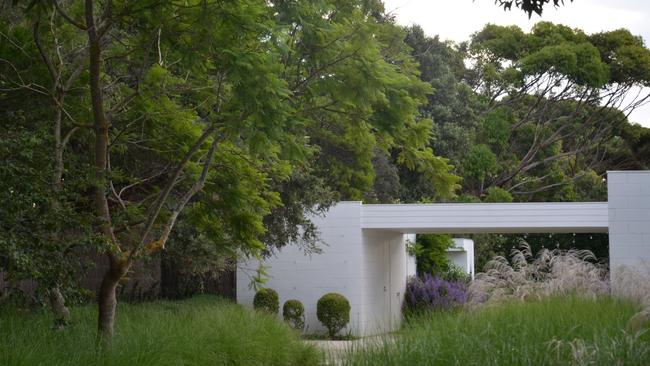
There’s something magical about walking under big trees, especially in summer when they significantly lower air and surface temperatures. In this tranquil garden at Portsea on Victoria’s Mornington Peninsula, the specimen trees, planted decades ago by a previous owner, are the defining element.
“That sense of establishment is not something you can just go out and buy,” says landscape designer Myles Broad of Eckersley Garden Architecture, who sensitively rejuvenated the 2000sqm garden. He describes the ginkgo (Ginkgo biloba) as “one of the nicest specimens I’ve ever seen”. Other large trees include gleditsia, jacaranda, a perfectly formed crepe myrtle and two elms.
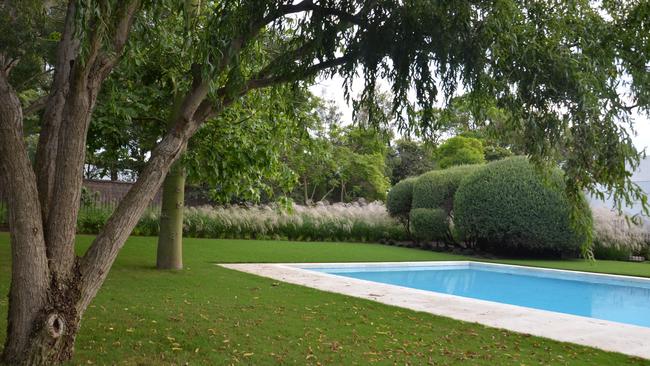
The holiday home, a minimalist design by architect Wayne Gillespie, sits in the centre of the completely private block. “You can’t see any other houses,” says Broad. “The property feels generous with its space and proportions, because it hasn’t all been given up to the house.”
The home’s clean lines influenced the approach taken by Broad and his clients (who have “ a very good eye”, the landscape designer says appreciatively) in simplifying the new layout of the garden. “It was all about taking that mid-century vibe and running it out into the garden,” Broad explains. “The shapes of the garden are all rectilinear but the plants create the softness.” The design plan ensured that no trees were removed despite the significant scope of work.
A new swimming pool of generous proportions sits within a simple lawn to the east of the house, where the existing sculptural shapes of large, clipped coastal teatree were given new prominence.
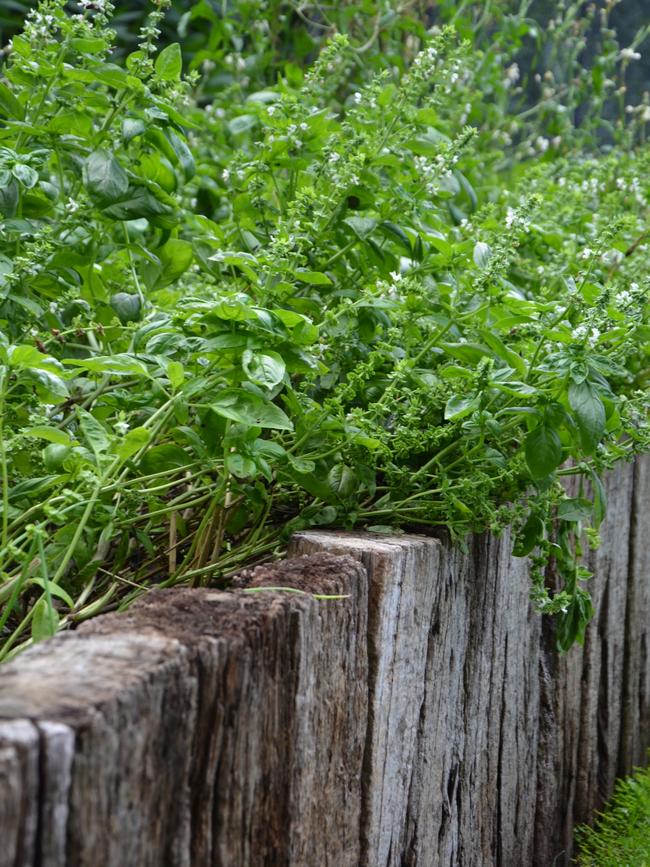
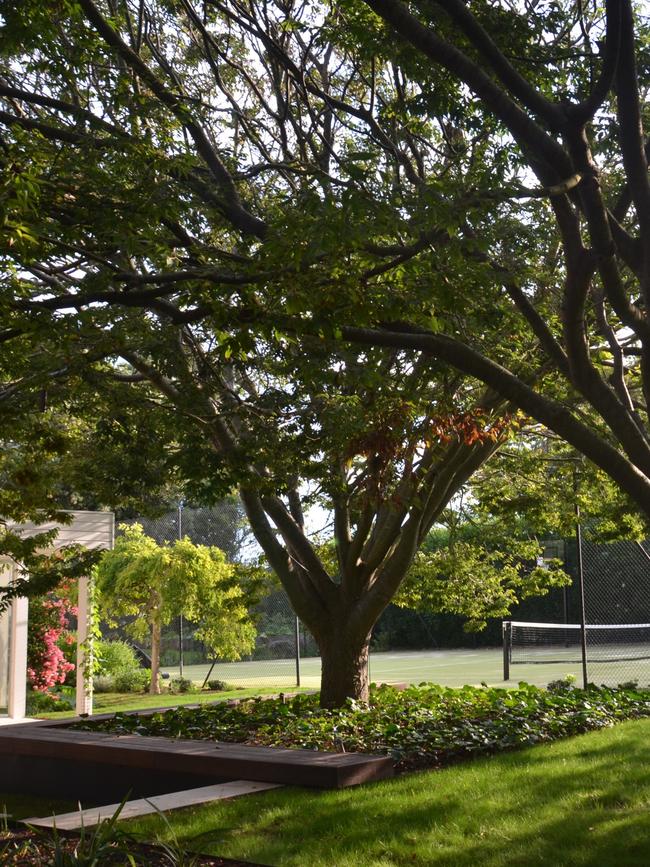
Where the old pool had been, Broad created a wide lawn, backed by an informal meadow lawn planted with seasonal bulbs, as well as areas where the lawn is sculpted into contoured mounds. Near the existing tennis court are an in-ground trampoline, vegetable garden and a small orchard.
Eckersley Garden Architecture, based in Mebourne, has a reputation for skilful and interesting use of plants. Strong, simple under-plantings here include blocks of tough performers such as Indian hawthorn (Rhaphiolepis intermedia and Rhaphiolepis ‘Oriental Pearl’) and Pittosporum ‘Miss Muffet’, with colour coming from blue spur flower (Plectranthus ecklonii) in autumn and Hydrangea ‘Blue Wave’ in summer. Along the driveway, the grasses Miscanthus ‘Sarabande’ and Pennisetum ‘Nafray’ add texture and movement, especially from summer through autumn when the tall flower spikes feature.
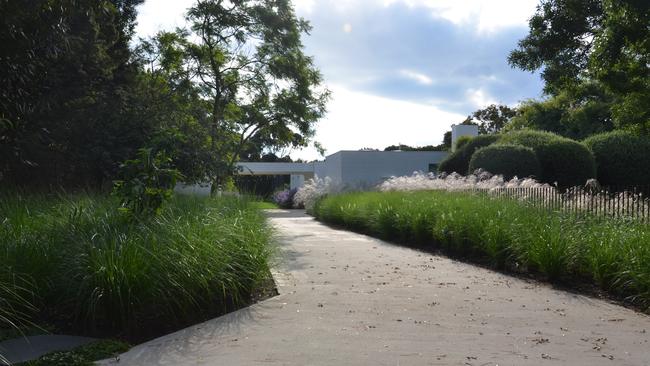
The undulating screen of fragrant olive (Osmanthus x fortunei) is an inspired alternative to a formal hedge along the front boundary of the property, while two rare trees were added – pink flowering Cape chestnut (Calodendrum capense) and pink-leafed Chinese cedar (Cedrela sinensis). Spilling over walls is the lush-looking succulent baby sunrose (Aptenia cordifolia), whose leaves and crimson flowers are edible.
Broad has had a connection with the owners since 2015, and has designed three gardens for them. “It’s been a joy to work on,” he says of this project. “Beautiful garden, beautiful clients.”
Visit the Portsea garden on a day tour as part of the Australian Landscape Conference held in Melbourne, March 17-21.
–
Q&A
My lillypilly hedge is thriving but has bubbly distortions on the leaves. What should I do? Marg Mitchell, Tuross Head, NSW
Pimple psyllid is a tiny, native pest that causes galls and pits on new growth of some species of Syzygium, especially S. australe and S. paniculatum and their cultivars. Damage is unsightly and can cause dieback. The pest is so intractable that nurseries largely stopped growing susceptible varieties. To treat, prune off the affected leaves. Contact sprays are largely ineffective; systemic products such as Confidor are effective but are toxic to bees and should be avoided. As you will always have the battle, consider planting a resistant lillypilly instead, such as S. luehmanni, Acmena smithii var Minor (‘Goodbye Neighbours’ and ‘Cherry Surprise’ are good cultivars) or Acmena smithii ‘Firescreen’.
Given the current scarcity of potatoes, can I grow them year-round in pots? Gerard Holmes, Blairgowrie, Vic
You can grow spuds in large pots or use potato grow-bags that allow easy access to the crop. Best growth is when temperatures are 16C-22C, so in cold areas start them early spring and summer. In warm areas, plant in autumn and winter. Buy certified, disease-free seed potatoes and keep “hilling up” more soil around the plants as they grow. Expect to harvest in about four months.
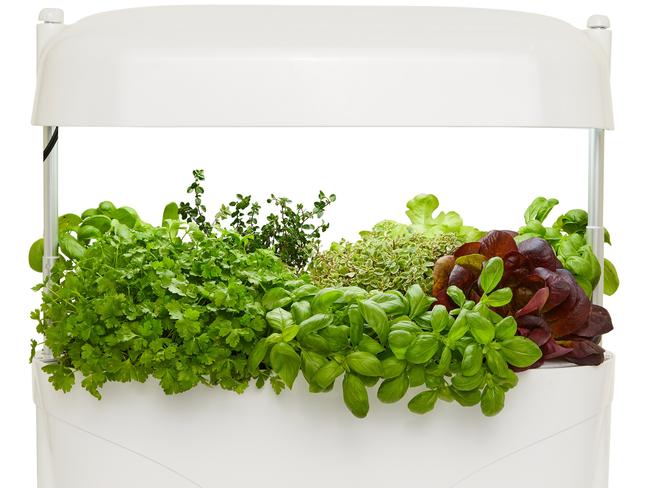
My correa groundcovers have grown profusely, spreading 2-3m. Should I water at their centres or over the whole area? Andrew Cool, Adelaide
The roots will also have spread outwards since planting, although probably not as far as the foliage. I’d water the whole area, deeply but as infrequently as possible.
Send your questions to helenyoungtwig@gmail.com. The best question for February wins a Kitchen Garden by Vegepod ($349) for growing edibles indoors.

